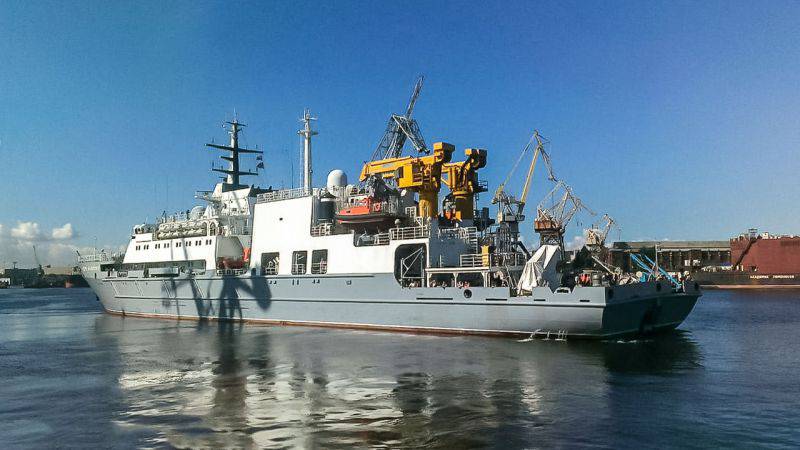The rescue ship "Igor Belousov" entered the final stage of factory sea trials
10 August 2015, the newest rescue ship “Igor Belousov”, built for the Navy Search and Rescue Service, entered the Baltic Sea and set sail for the Atlantic to undergo the final stage of factory running trials.
As part of the ship’s crew, the 15 engineers of Tetis Pro JSC went out to sea to ensure testing of rescue equipment and equipment supplied by the company and installed on the ship, including: deep-sea diving and rescue complex GVK-450, deep-water submersible hydraulic station with a diving kit tool PGS-500, working remotely controlled uninhabited apparatus RTPA “Panther plus”, towed search side-scan sonar HBO.
During the final stage of the factory running tests of the vessel, it is planned to test all the systems and mechanisms of the GVK-450, including gas supply systems, monitoring the parameters of the gas environment and life support. There will also be a descent of the diving bell to a depth of 450 m. In addition, deep-sea tests of the PTPA Panther Plus with a dive on 1000 and a side-scan sonar on the 1500 m will be carried out.
The rescue vessel "Igor Belousov" is intended for rescue of crews of emergency submarines, as well as for supplying air, electricity and rescue equipment to submarines and surface ships. The equipment installed on the rescuer allows finding and examining underwater objects, including conducting search and rescue operations.
The displacement of the SS "Igor Belousov" is about 5000 tons, it is able to reach speeds in 15 nodes, and its cruising range reaches 3,5 thousands of miles.
GVK 450 is a complex multifunctional system designed to ensure the operation of 12-ti divers who are under working pressure and work in person 3 shifts at depths up to 450 m for the time required to complete the task. Upon completion of work, divers are decompressed. The second important task of the complex is the decompression and rehabilitation of submariners evacuated from an emergency submarine.
The basis of the deep-sea diving complex GVK-450 is 4 residential pressure chambers, diving bell and control post. The work of residential pressure chambers is provided by units of life support systems, gas distribution and storage. The units of the breathing mixture cleaning system in the compartments, the temperature and humidity control systems in the compartments ensure a comfortable and safe stay of the divers in the pressure chambers.
RTPA "Panther Plus" is an uninhabited submersible of the working class, controlled from the surface by a pilot or a group of operators (pilot, navigator, etc.). Designed to perform complex underwater work on strong currents at depths up to 1000 meters. Thanks to powerful propulsive devices, the device has high levels of controllability and can serve as a platform for accommodating a wide range of equipment and tools. Underwater survey using NLA allows you to get objective visual information about the status of underwater objects in real time, as well as perform a wide range of underwater work without involving divers, for example, at great depths or in dangerous conditions - in chemically infected areas, in conditions of increased radiation ( for example, at nuclear power plants), etc.
HBO - towed search side-scan sonar is designed to search and classify underwater objects, including small-sized ones, at depths up to 1500 meters at travel speeds up to 10 nodes, search bandwidth up to 500 meters. Additionally installed on the HBO magnetometer provides effective detection of ferromagnetic objects. The broadband signal technology allows for clear, high-resolution images.

Information